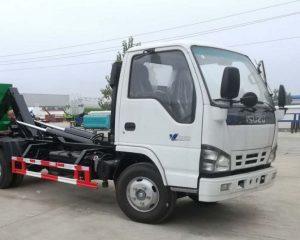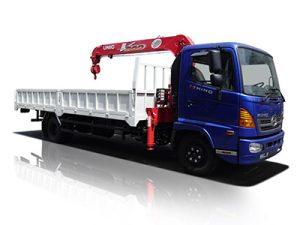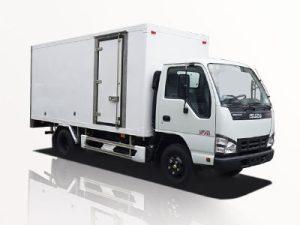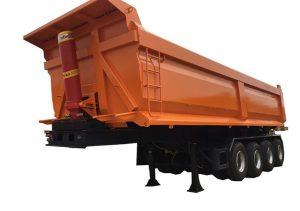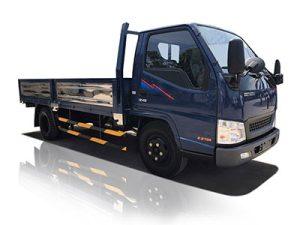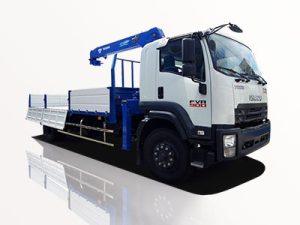Monday to Saturday - 8:00 -17:30
Ultimate Guide to Large Recreational Vehicles: Everything You Need to Know
Introduction
Are you considering taking the plunge into the world of recreational vehicles (RVs)? With a large recreational vehicle, you can travel the country in style and comfort, making unforgettable memories along the way. This comprehensive guide will cover everything from the benefits of large RVs to tips for choosing the right one, popular models, essential maintenance, and how to plan a road trip. Whether you’re a seasoned traveler or new to RVing, this article is designed for you!
What is a Large Recreational Vehicle?
A large recreational vehicle is typically defined as any RV over 30 feet in length. These vehicles provide ample space for sleeping, cooking, and living, making them ideal for families or individuals who plan on spending extended periods on the road. They usually come with many amenities, including kitchens, bathrooms, sleeping quarters, and entertainment systems.
Types of Large Recreational Vehicles
Large RVs can be categorized into several types, each catering to different needs and preferences. Here are the main types:
- Class A Motorhomes: These are the largest and most luxurious RVs. They offer spacious interiors and high-end features.
- Class C Motorhomes: Slightly smaller than Class A, these RVs often have a distinctive over-cab sleeping area and are more budget-friendly.
- Fifth-Wheel Trailers: These must be towed by a pickup truck and usually provide plenty of living space with slide-outs.
- Travel Trailers: Also towed behind a vehicle, travel trailers come in various sizes, but larger models can offer ample living space.
Benefits of Choosing a Large Recreational Vehicle
Opting for a large recreational vehicle comes with many advantages. Here are some reasons why a large RV might be the perfect fit for you:
1. Space and Comfort
Large RVs offer a spacious living environment that feels more like home. Ample room allows for comfortable movement, perfect for families or groups.
2. Full Amenities
From full kitchens to bathrooms, large RVs come equipped with essential amenities, making it easy to prepare meals and enjoy daily routines while on the road.
3. Better Entertainment Options
Many large RVs include entertainment systems, outdoor kitchens, and comfortable seating areas, enhancing your travel experience.
4. Stability and Safety
Due to their size and weight, larger RVs often provide better stability on the road, making them feel safer, especially in adverse weather conditions.
Comparison of RV Types
| Type | Length | Amenities | Price Range |
|---|---|---|---|
| Class A | 30-45 feet | Luxury amenities, full kitchens, and bathrooms | $70,000 – $500,000+ |
| Class C | 25-35 feet | Comfortable living spaces, often with slide-outs | $50,000 – $150,000 |
| Fifth-Wheel | 28-40 feet | Spacious living with multiple slide-outs | $30,000 – $100,000 |
| Travel Trailer | 20-35 feet | Variety of layouts with kitchen and bath options | $15,000 – $50,000 |
How to Choose the Right Large Recreational Vehicle
Choosing the right large RV involves careful consideration of multiple factors. Follow these tips to make an informed decision:
1. Assess Your Needs
Consider how many people will typically travel in the RV. Families will require more sleeping space than solo travelers. Determine the length of trips you intend to take to decide on amenities.
2. Set a Budget
Consider not just the purchase price, but also insurance, maintenance, fuel, and campground fees. Setting a budget will help filter your options.
3. Take a Test Drive
Before making a purchase, always take the RV for a test drive. Get a feel for handling, space, and comfort.
4. Research Different Models
Look into reviews and ratings of various RV models. Attend RV shows to compare features and talk to manufacturers and dealers.
Checklist for RV Buying
- Determine vehicle length and weight capacity
- Evaluate available features and layouts
- Check warranty and dealer reputation
- Inquire about maintenance and service options
Popular Large RV Models
Exploring different models can help pinpoint which RV suits your needs best. Below are a few popular large models:
1. Winnebago Horizon
A luxurious Class A motorhome known for its high-end finishes and comfort. The Horizon offers various amenities, including multiple slide-outs, spacious living areas, and top-of-the-line appliances.
2. Forest River Cedar Creek
This fifth-wheel trailer is popular among full-time RVers due to its spacious layout, high ceilings, and exceptional insulation.
3. Thor Motor Coach Outlaw
If you seek versatility, this Class A RV doubles as a toy hauler, allowing you to bring along recreational gear like bikes or ATVs.
4. Jayco North Point
A high-end fifth-wheel with multiple floor plans, large kitchen islands, and entertainment features, perfect for extended trips.
Essential Maintenance Tips for Large RVs
Maintaining your large RV is crucial for ensuring it lasts for many years. Regular inspections and upkeep can prevent costly repairs down the road. Here are some vital maintenance tips:
1. Perform Routine Inspections
Check your tires, brakes, and lights regularly. Inspect the roof annually for leaks or damages and examine seals and caulking.
2. Keep the Engine and Systems in Check
Regularly service the engine and check the transmission fluid and coolant levels. Pay attention to the battery and hoses for signs of wear.
3. Maintain the Electrical System
Ensure all lighting and electrical systems work, and periodically check for any loose connections.
4. Clean and Prepare for Storage
Prior to storage, clean the RV thoroughly, including the interior and exterior. Properly winterize the plumbing system if storing in cold climates.
Planning an RV Road Trip
Planning a successful RV road trip requires careful preparation. Here are steps to consider before you hit the road:
1. Define Your Route
Determine where you want to go and the stops you’d like to make along the way. Use mapping software to visualize your route.
2. Reserve Campgrounds and RV Parks
During peak seasons, it’s wise to book RV parks in advance to secure your spot, especially at popular destinations.
3. Prepare Your RV
Pack necessary supplies such as food, clothing, and recreational gear. Don’t forget your vehicle safety kit!
4. Stay Connected
If you rely on GPS, ensure your RV is equipped with the latest maps and applications. Consider a mobile hotspot for internet access when you’re on the go.
Frequently Asked Questions (FAQs)
1. What is the average cost of a large recreational vehicle?
The average cost of a large RV can range from $30,000 to over $500,000, depending on the model and features.
2. Do I need a special license to drive a large RV?
In most states, a regular driver’s license is sufficient for operating a large RV, but it’s essential to check your state’s regulations.
3. How do I find the best campgrounds for RVs?
You can use RV-specific platforms like RV Park Reviews or Allstays to find campgrounds that suit your needs, with evaluations and amenities.
4. What are the insurance requirements for large RVs?
Insurance requirements can vary by state. Additionally, many lenders require full coverage for financed RVs.
5. How often should I service my large RV?
It’s best to service your RV every 5,000-10,000 miles or at least yearly, depending on usage and manufacturer recommendations.
6. Is it cheaper to stay in an RV or rent accommodations?
Staying in an RV can be more economical for long trips, considering that it saves on hotel costs and dining options. However, initial costs can be high.


